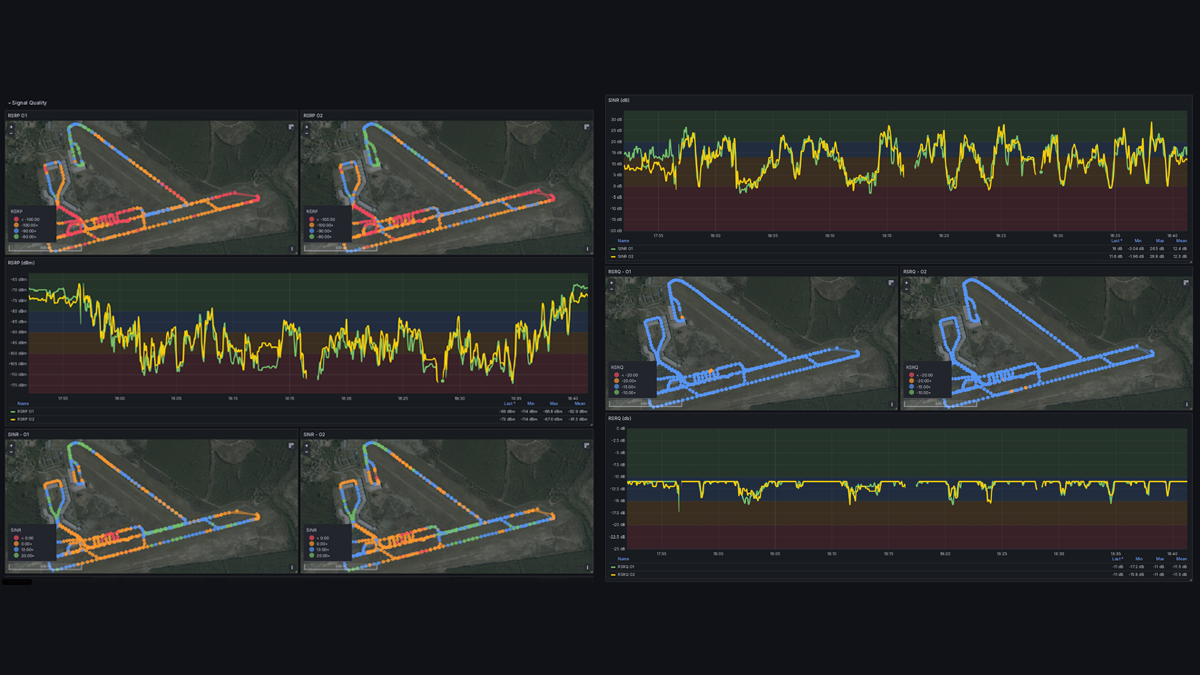On top of those passive measurements on the radio environment and network parameters, OMNT can also run an iPerf3 server / client for bandwidth, latency and jitter evaluation as well as round-trip-time evaluation via ICMP (Ping).
Measurement data can be stored locally as well as sent to an InfluxDB 2.x server. Measurement results can be visualized e. g. via provided Grafana Dashboards or be further processed e. g. with Python. Besides its measurement capabilities, OMNT provides a deep insight into the state of the phone, such as software versions, connectivity states, SIM card content, and much more.
Network related Carrier Settings can be configured. Also, OMNT provides access to different “secret“ settings on Android phones.
Furthermore, OMNT supports remote configuration and control, enabling centralized management of measurement activities across a fleet of devices. Users can remotely initiate radio environment measurements, trigger iPerf3-based bandwidth and jitter tests, or perform ICMP-based round-trip time evaluations. This remote management capability is especially valuable for large-scale experiments or continuous monitoring scenarios, ensuring coordinated data collection without requiring physical interaction with each device.

